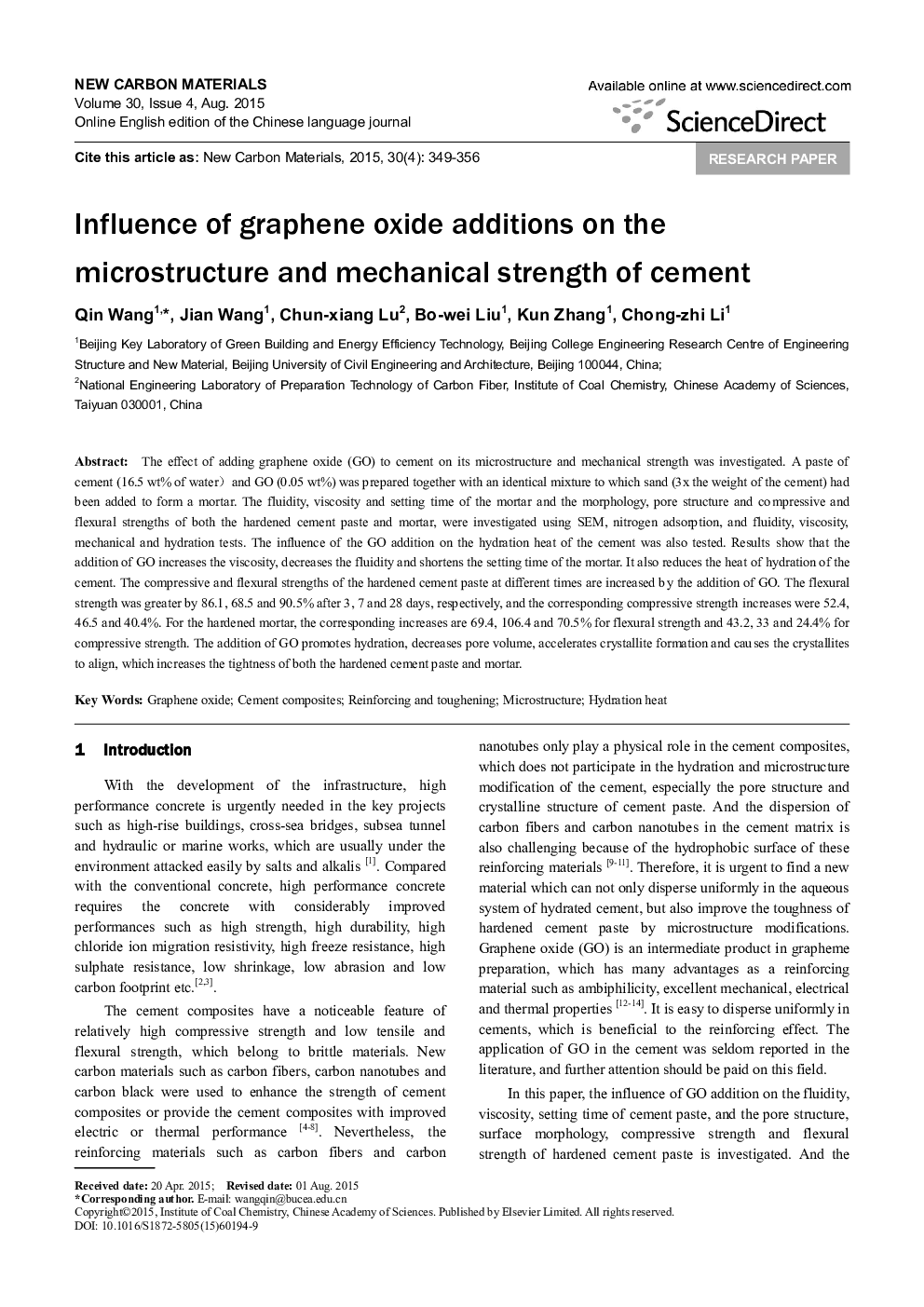| Article ID | Journal | Published Year | Pages | File Type |
|---|---|---|---|---|
| 1558328 | New Carbon Materials | 2015 | 7 Pages |
Abstract
The effect of adding graphene oxide (GO) to cement on its microstructure and mechanical strength was investigated. A paste of cement (16.5 wt% of water?and GO (0.05 wt%) was prepared together with an identical mixture to which sand (3x the weight of the cement) had been added to form a mortar. The fluidity, viscosity and setting time of the mortar and the morphology, pore structure and compressive and flexural strengths of both the hardened cement paste and mortar, were investigated using SEM, nitrogen adsorption, and fluidity, viscosity, mechanical and hydration tests. The influence of the GO addition on the hydration heat of the cement was also tested. Results show that the addition of GO increases the viscosity, decreases the fluidity and shortens the setting time of the mortar. It also reduces the heat of hydration of the cement. The compressive and flexural strengths of the hardened cement paste at different times are increased by the addition of GO. The flexural strength was greater by 86.1, 68.5 and 90.5% after 3, 7 and 28 days, respectively, and the corresponding compressive strength increases were 52.4, 46.5 and 40.4%. For the hardened mortar, the corresponding increases are 69.4, 106.4 and 70.5% for flexural strength and 43.2, 33 and 24.4% for compressive strength. The addition of GO promotes hydration, decreases pore volume, accelerates crystallite formation and causes the crystallites to align, which increases the tightness of both the hardened cement paste and mortar.
Related Topics
Physical Sciences and Engineering
Materials Science
Materials Chemistry
Authors
Qin Wang, Jian Wang, Chun-xiang Lu, Bo-wei Liu, Kun Zhang, Chong-zhi Li,
